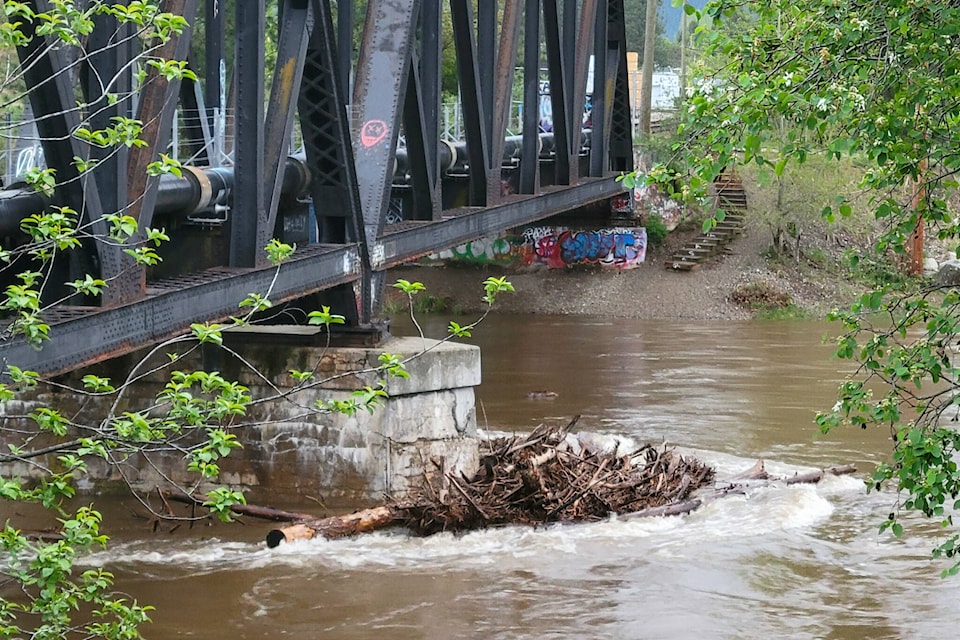The flooding situation in British Columbia has entered a “period of stabilization” after at-risk regions received less rain than expected, but forecasters say warm weather will likely trigger further threats later this week.
Emergency Management Minister Bowinn Ma said Monday that communities such as Grand Forks, about 520 kilometres east of Vancouver, saw less precipitation than was originally forecasted for the weekend.
The result is the provincial river forecast centre downgrading flood warnings to flood advisories, including in the entire Boundary Region where sandbagging has been at full speed for days.
As many as 41 properties in the area were under evacuation orders at one time on Sunday.
Ma warned, however, that diminished risk does not mean no risk, and devastated communities such as Cache Creek, 350 kilometres northeast of Vancouver, remains under flood warnings.
“Communities that face challenges last week, such as Cache Creek, Okanagan Indian Band and Grand Forks can expect a period of stabilization for the rivers throughout this week,” Ma said.
“While the weather was co-operative, this does not mean that conditions have resolved entirely on the ground.”
The province estimates that about 50 people in B.C. remain affected by evacuation orders triggered by flooding or flood risks, while another 2,000 are on alert in case of flooding.
Dave Campbell, head of the BC River Forecast Centre, said during a news conference that the next few days will see cooler, unsettled weather patterns that contribute little to flood risks.
However, the anticipated spike in temperatures later in the week could create more problems, possibly affecting communities that weren’t hit last week, he said.
Campbell said above-seasonal temperatures in late April and early May have burned through about a quarter of B.C.’s seasonal melt, which is much faster than normal, however, there is still more snow in higher elevations.
“For the next period of warming, we’re anticipating an additional round of accelerated snow melt,” Campbell said. “We could see, again, another period of elevated flood risk in the province and bringing on potentially new areas that have not experienced flooding so far this year, particularly as we start to melt the higher-elevation snow and start to bring in runoff into the larger rivers.”
Environment Canada is forecasting temperatures in Grand Forks to hit 32 degrees by Sunday.
Ma also responded to reports that Cache Creek residents wanted to engage the province “in big-picture planning” to limit the annual flood threat.
The minister said B.C. is developing a provincial flood strategy “that will inform … local mitigation plans” and will provide substantial funding toward emergency preparedness, but communities also need to make decisions on what they want to prioritize in those plans.
“A lot of those conversations have to be held at the community level,” Ma said. “It doesn’t necessarily help to have the province come in with a top-down, heavy-handed approach to those conversations.”
—Chuck Chiang, The Canadian Press
READ MORE: Grand Forks flooding recedes, another crest expected by end of week
READ MORE: Waters recede in parts of flood-ravaged B.C. as half of province remains under threat
